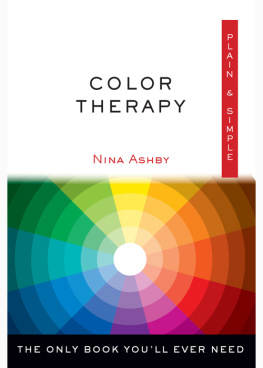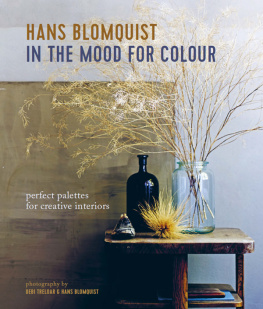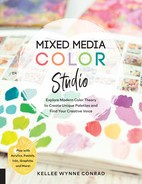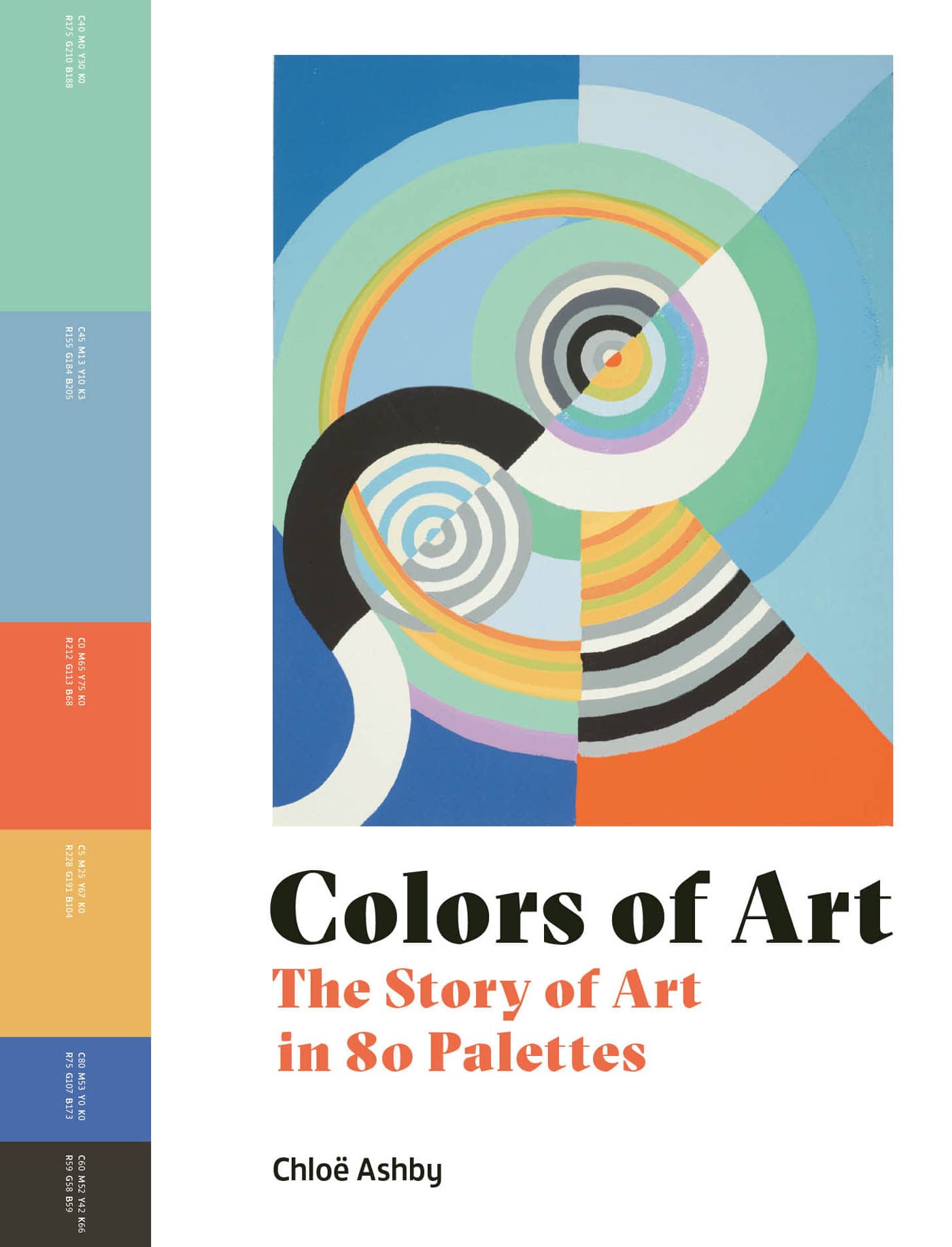Introduction
Color me in
C 6 M 20 Y 60 K 0
R 229 G 201 B 121
Introduction
Color me in
Can you imagine a world without color? Black-and-white photographs and films give us a rough idea, but our kaleidoscopic surroundings mean that blue, yellow, red, etc. (the list goes on) are constant companions. Theyre stitched into our clothes, printed in our books, piled on our plates. They hang on our walls and are displayed on our screens. Theyre at their most vibrant during waking hours, but theyre also there, a little fuzzy around the edges, when we close our eyes at the end of the day. As a child, lying in bed in the dark, waiting to fall asleep, I remember marveling at the flashes of blue, yellow, and pink swirling across the underside of my lids. No matter how tight I squeezed my eyes shut, the flashes wouldnt go away.
As with most things readily available to us, we take color for granted. How often do you pause and contemplate a particular shade, why it is the way it is and what it means? When the French conceptual artist Sophie Calle asked a couple of dozen people who had been blind since birth to describe their image of beauty, one replied, Green is beautiful. Because every time I like something, Im told its green. Grass is green; trees, leaves, and nature, too. I like to dress in green. Read this, and then consider the infinite varieties of green you see daily without ever really seeing them.
Whats your favorite color? Its a question weve all been asked, and one Ive been contemplating as I write this introduction. After all, we all have one, dont we? For Claude Monet it was violet (see ). It might strike you as strange that I dont have an easy answer, especially since Ive written a book on the colors of art. But even if I did and, lets say, I also found green to be the image of beauty, I could be talking about apple-green, leaf-green, lime-green. Emerald, olive, sage. All things nature-related. Life itself.
Its hard to imagine a world without color, and its also hard to imagine a world in which color is static, fixed. The history of each hue is unique, and all are subjective and capable of change. The meaning of color fluctuates depending on culture, time, and place. Its appearance shifts, tooaccording to the medium in which its rendered, as a consequence of exposure to bright light, damp or heat, and because of varying tastes. After Philip II of Spain remarried, Sofonisba Anguissola retouched the portrait she originally made of the king, replacing his heavy cape with a lighter option in fine black silk, so it would work as a pair with a portrait of his new wife (see ).
Art helps us to appreciate and understand color. From prehistoric times to the present day, artists around the world have used their palettes to describe, symbolize, elucidate. Theyve chosen certain hues to tell stories, and packed their pigments with social, political, and religious references. Color in art can be realistic, as in the standard morning spread in 17th-century Netherlands painted by Clara Peeters (see ).
Colors of Art: The Story of Art in 80 Palettes charts the most notable, striking, and madcap uses of color throughout the ages. From the earth to semiprecious stones and crushed insects, it explores the unexpected materials used to make pigments and the lengths to which artists have gone to obtain them. It delves into the cost, availability, and desirability of colors, as well as the changing cultural and philosophical attitudes toward practices such as modeling and mixing. It navigates turning points big and smallamong them, the Impressionist Revolution (see ), which was sparked by scientific and technological innovations and a clutch of plucky artists with a radical approach to picture-making. It invites you to look through a bright lens at familiar and lesser-known works.
Antoine Vollon, Mound of Butter, 187585, oil on canvas, 19 x 24 in (50.2 x 61 cm).
Anna Ancher, Sunlight in the Blue Room, 1895, oil on canvas, 25/ x 23/ in (65.2 x 58.8 cm).
When I was planning my chapters, each of which covers a crucial moment for the colors of art, some works came to me right away. Giottos heavenly-blue Scrovegni Chapel (see ).
This book isnt definitivehow could it be, considering colors inexhaustible variety? Instead, its my attempt to capture and celebrate that variety on the page. Each artwork is accompanied by an infographic palette thats intended to help you engage with the colors at play. Rather than representing the amounts of color used on each canvas, the palettes are designed to draw your attention to the hues that I believe have the greatest impact. Its worth saying that they arent exact replicas of the artists palettes; pigments can fade over time, and reproductions vary in tone and saturation.
There are many, many more artworks I could have included (some Ive snuck into sidebars). My focus is on painting, and color is my jumping-off point, but the art that does appear within these pages can be viewed through countless lenses. Beyond wood panels and canvases, color is wound up with sculpture, video art, and installation: think Louise Bourgeoiss mysterious red room, Anish Kapoors powdery pigment sculptures, and James Turrells sublime light-filled spaces. Punctuating my mostly chronological case studies are in-depth features on everything from the properties of color and color theory to the Pantone palette, and the complex and unresolved issue of the mostly white Western canon.
The story of art reads differently depending on where and when youre doing the readingthis is just one version, told in 80 palettes. You can read it chronologically from start to finish, or you can dip in and out, flicking through the pages. Wherever you land, youll find yourself immersed in colorrich, vital, chameleonic.
douard Manet, The Street Singer, 1862, oil on canvas, 41 x 67/ in (106 x 171 cm).
First impressions
Prehistoric and ancient art
C 0 M 100 Y 100 K 25
R 158 G 11 B 12
First impressions
Prehistoric and ancient art
Before there was paint, there was the earth: muddy and rich with promise. For tens of thousands of years, artists have manipulated minerals to make their palettes. Theyve dug and extracted, ground and bound, and the resulting fiery ochers, dusty coals, dark taupes, and bright whites are the foundational colors of all art.












